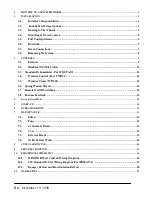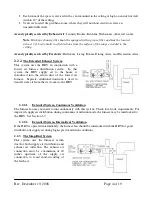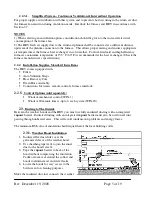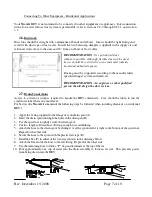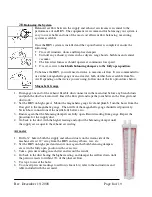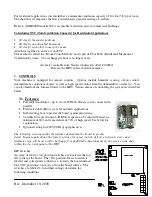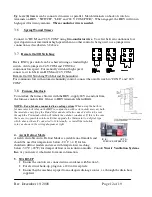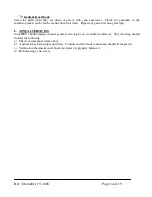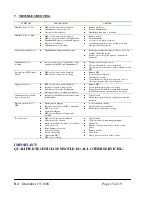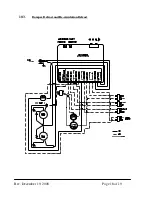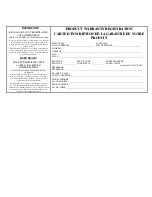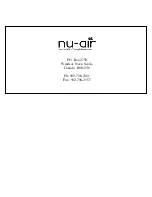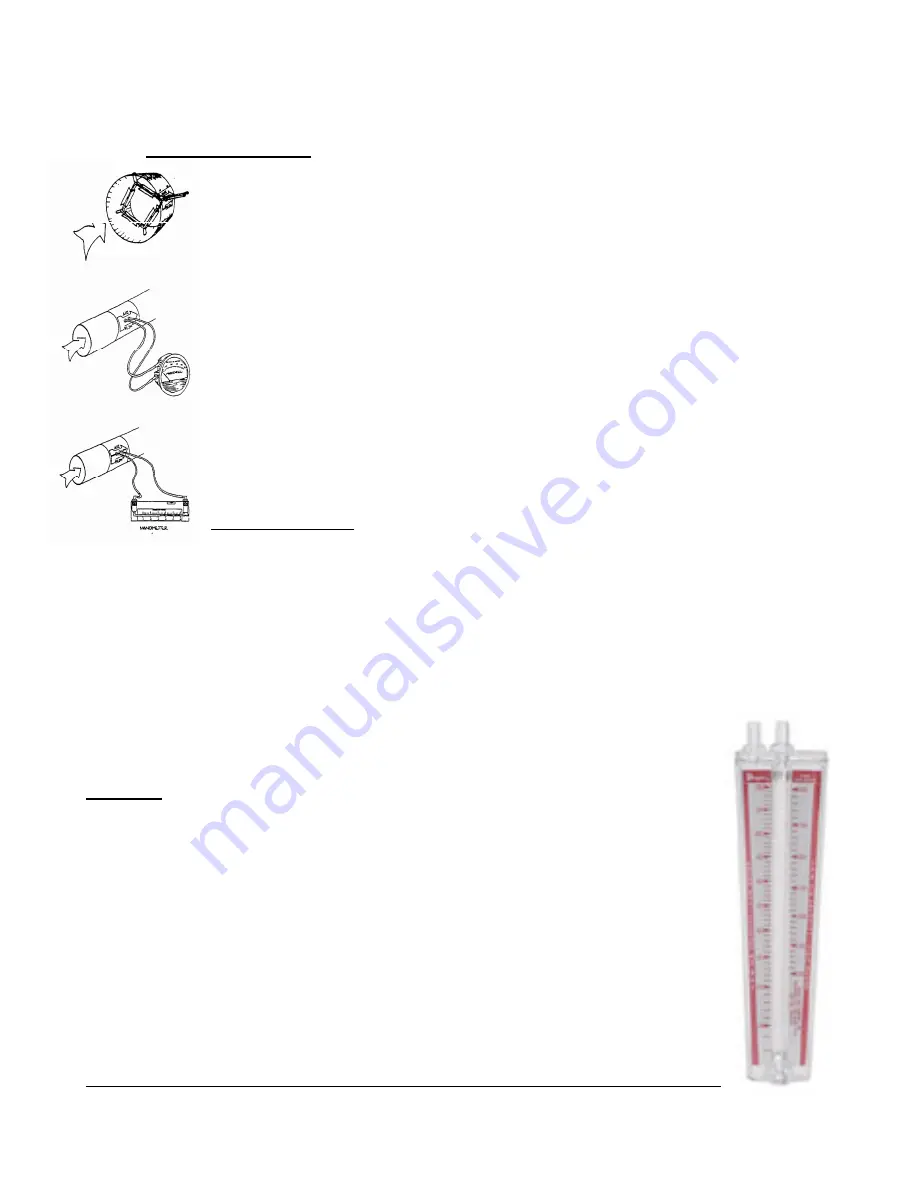
Rev. December 19, 2008
Page 8 of 19
2.8.
Balancing the System
Balanced air flow between the supply and exhaust air streams is essential to the
performance of an HRV. The equipment we recommend for balancing your system is
easy to use, reliable and one of the most cost efficient flow balancing, measuring
systems available.
Once the HRV system is installed and the vapour barrier is completed, ensure the
following:
Close all windows, doors and fireplace dampers
Turn off any exhaust systems such as dryers, range hoods, bath fans and central
vacuums.
The forced air furnaces should operate at continuous low speed.
Use set-screws to
lock both balancing dampers to the fully open position.
To balance the HRV, you will need a device to measure air flow. It is recommended to
use either a magnehelic gauge or an air meter, both of which are available from Nu-
Air. Depending on the device you are using, follow one of the two procedures below:
Magnehelic Gauge
1.
Disengage one end of the exhaust flexible duct connector in the main duct before any branch ducts
and push the duct back into itself. Insert the flow grid and tape the joint between the flow grid and
ductwork.
2.
Set the HRV on high speed. Mount the magnehelic gauge level and plumb. Join the hoses from the
flow grid to the magnehelic gauge. The needle of the magnehelic gauge should read positively.
Switch hose connections if the needle falls below zero.
3.
Ensure again that the balancing dampers are fully open. Record reading from gauge. Repeat the
procedure for the supply duct.
4.
Go back to the duct with the higher reading and adjust the balancing damper until
the supply air is equal to the exhaust air reading.
Air meter
1.
Drill a ¼” hole in both the supply and exhaust ducts on the warm-side of the
machine at least 12” away from the HRV and any elbows, tees, etc.
2.
Set the HRV on high speed and ensure once again that both balancing dampers
are set in the fully open position with a set-screw.
3.
Take a pressure reading in each duct and record the results.
4.
Go back to the duct having the higher reading, and damper the airflow down until
the pressure reads to within 10% of the other air flow.
5.
Use tape to reseal the holes.
6.
To convert pressure readings to airflow (cfm or L/s) refer to the instructions and
table included with the air meter.


